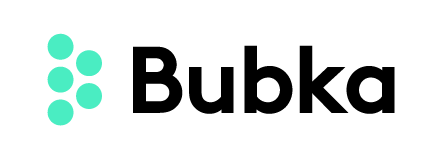Var requested Bubka to extend their research on sustainability-focused TV spots in 2021 to include radio spots using the same methods. Veerle Hellemans, Var’s head of market intelligence, and Wim Vermeulen, Bubka’s director of strategy and sustainability, reveal the primary findings, keeping in mind that everyone can contribute.
Before we examine the results of this study and its implications, it might be best to recall its history. Where did this study come from, Veerle?
Veerle Hellemans: Na het onderzoek dat Bubka en professor Gino Verleye in 2021 voerden naar de impact gegenereerd door als “duurzaam” gedefinieerde boodschappen in tv-spots en de behoorlijk bedroevende resultaten die werden gemeten, vroegen we ons als radioregie af hoe het gesteld zou zijn met radiospots. We willen mee onze schouders zetten onder inspanningen die een reële positieve impact kunnen genereren. Er is duidelijk een momentum begonnen en we wilden ons steentje bijdragen.
Wim Vermeulen: So at Var’s request, we set up a new study, based on the same methodology we applied to TV and video.
From a batch of 1,000 radio spots, we selected 100 that deal with one of the 17 SDGs.
After all, sustainability is not just about ecology.

By employing the same methodology and questioning as the TV survey, we could compare the latest figures with those obtained from it.
And what did that exercise teach?
Wim: After reviewing the data, we discovered that radio advertisements with a sustainable message resulted in a credibility rate of 9.7%. This is a disappointment because the rate has remained unchanged for a year and a half.
Veerle: At Var Mee, we aim to address this issue. To begin with, we want to analyze and learn from the spots which rank higher to pin down the key drivers of credibility and make the concept more tangible. Subsequently, we will embed these drivers as parameters in our regular DIVA post-impact survey to measure credibility as KPIs. Eventually, the Positive Impact Barometer will become a content standard parameter, providing valuable insights that will lead to improvement over time within the sector.
Wim: To make this “assessment” manageable for advertisers, we can provide “credibility scores” per driver overall, for the sector, and then for each spot individually.
What will Var do with these results?
Veerle: We will be assessing our advertisers with the help of Bubka and creating sustainable DIVA reports to provide them with future advice. These insights will be published in a white paper that we will be presenting to the market soon.
Wim: With our database now consisting of 200 spots (100 TV and 100 radio spots), we can perform a more in-depth analysis. The focus of these spots is to promote sustainability while considering the brand itself. The analysis is divided into two pillars: first, if the audience believes the message portrayed in the spot, and second, if it motivates them to choose a sustainable product over an unsustainable one they may typically purchase.
Var’s new initiative is important because it promotes sustainability, which has become a valuable factor for brand consideration. Similar to how attention is used to measure advertising performance, sustainability has become a new currency for measuring brand appeal. This initiative has the potential to drive the industry forward.
Wouldn’t it be helpful to implement that on a national level?
Veerle: Since its repositioning, RMB has indeed already made significant progress in terms of sustainability mindset. Their approach differs from ours and both can complement each other. A national initiative can definitely be put on the table. In the longer term, the possibility of working with incentives or other benefits for the good performers may also be considered.


